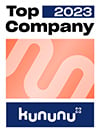Website relaunch SEO: How to keep your rankings

When relaunching your website or online store, there are many changes to your website that can also affect your ranking in the Google search engine and your previous search engine optimization. With these tips, we would like to show you how you can approach your SEO relaunch without losing existing rankings. The relaunch is not always a complete reboot and should be given subpages if they are well received by your target group and can already be found in the first search results.
Reading time 6 min
- First, we want to explain how your homepage or website relaunch can affect your Google ranking
- Then we'll help you with the best way to prepare for your relaunch
- Now we continue with the various tips for your perfect SEO relaunch: a total of eight tips await you!
- You may even be able to improve your rankings this way
- Further tasks await you after the website relaunch
- Indexing all pages
- Announcing the relaunch
- Registration in the Google Search Console
- Our conclusion
- FAQ
- How can I use search engine optimization for online stores?
- How do I build a good link structure on my website?
- What is a test environment and why is it important?
- What are important ranking factors for Google?
- How can I carry out a competitive analysis to rank better with my main keyword?
- What is a "hreflang"?
- When should I relaunch my website?
-
How much budget do I need to allocate for the relaunch of my website?
How does the SEO relaunch affect your rankings in Google?
Depending on how you change your website during a relaunch, existing rankings may simply disappear. It is therefore important to take the following tips into account. You can see how your rankings can be affected with a brief example: Imagine you change the page structure of your website and, for example, create some categories and subcategories that did not previously exist in the content structure of your site. To ensure that the new structure is maintained and accessible, the URL of the individual pages also changes. For example, a URL that was previously accessible at www.onlineshop.com/hosen becomes the URL www.onlineshop.com/herren/bekleidung/hosen. The already ranking old page no longer has any content and is no longer accessible from Google under this tag. From now on, your page will throw a 404 error, which Google will also notice. After a short time, your old page, which still exists under a new URL, will be dropped from the rankings. You will have to work your way back to the old ranking for the same content. And that's how quickly your website relaunch can affect your existing rankings. However, you can prevent the loss of rankings with our tips!
SEO relaunch preparations you should make
So that you know what conditions you are starting with, you should save the current data on your website and take stock. You can use Google Analytics, for example, and pull the statistics for your individual subpages. This way, you can find out which of your pages already have good rankings for keywords that you definitely want to keep. For these pages, you then need to prevent a 404 error from occurring and Google penalizing this with a ranking loss after the new website goes live. So the first step is to carry out a detailed SEO analysis to determine what is already working well in terms of SEO. You should adopt and save these points so that they remain in place for your new website. Look at which pages are search engine optimized and thus generate the most traffic, how many keywords the pages rank for and how well they rank.
Our tips for your relaunch and avoiding SEO mistakes
Now it's time to get down to business: the actual relaunch of your website. To ensure that the relaunch goes well and you can keep your rankings, it is worth considering the following tips during the changeover.
1. prohibit indexing
For the conversion, you should first make sure that the new website is not directly re-indexed. You can actively prohibit this. In this case, there are maintenance plugins that will help you. If you do not disable indexing, Google will assume that the content exists twice if you create the new website under a different domain. The Google search engine penalizes so-called duplicate content.
2. avoid missing and incorrect redirects
Redirects are an important issue if you want to move content from your old website to the new website. This is essential to retain rankings. Redirects are used whenever you delete pages, switch to a new domain, change the structure of your website and so on. They are therefore also relevant for your website relaunch.
A redirect is either a server-side or client-side redirection that automatically leads from one URL to another URL. If you change your URL structure in the course of the SEO relaunch, you must install redirects for all content pages. This way, users can still reach your content even though it can now be found under a different URL. To do this, you must also ensure that your redirects have the HTTP status code 301. This is because only 301 redirects are permanent redirects. Don't forget to also set up redirects for PDFs and images.
If you have set up redirects, it can still happen that you have set them up incorrectly. Possible errors are:
- The creation of a forwarding chain
- Using the wrong status code (302 instead of 301)
- An unsuitable link destination
3. providing an SSL certificate
Another point for a good SEO relaunch without Google penalties is the provision of a valid SSL certificate. This is incredibly important, as otherwise error messages may appear in the browser. This is not only annoying for users, as they could consider your site to be dubious, but also for Google. Ultimately, this could also lead to your site suffering in terms of visibility. So check whether your certificate is working or whether you need to approve it again for the new website.
4. do not use placeholder texts when you launch your site
You are probably familiar with the standard "Lorem ipsum" texts that are often used when the new content is not yet available. However, you should replace these standard texts with real, SEO-optimized texts when you launch your site. As long as you don't index it yet, everything is fine. But your content should come before proper indexing and the actual launch.
5. insert meta snippets
It is also important that you use your meta snippets for all websites. Especially for the pages that rank well, you should definitely keep the old snippets. The keywords contained are important and a decisive ranking factor for Google. Check whether your pages have all meta data consisting of unique meta descriptions and meta titles and contain the corresponding keywords.
6. full functionality of your website
Before your website or online store goes live, you should definitely test its functionality and go through every single aspect. In order not to forget anything, it is advisable to make a list of all functions when converting and programming your website. Once your project is as good as finished, you can go through the list step by step and test the functionality. The list should include every button, the display on every end device, the navigation and more.
7. check and adjust the internal linking
There are also links on your own website that do not match your new structure. Although your users can still find the new URL under the old URL, as you have set redirects, this is not ideal for the loading times of your website. You should replace them in any case so as not to attract negative attention from Google. In many content management systems, you can adjust your links in no time at all. The "Search & replace" function is suitable for this.
8. prevent incorrect links from the test environment
If you redesign and program your website in a test environment, you may have links specifically for the pages in the test environment. Of course, these must be replaced with the correct links if you want your website to go live. Otherwise, an incorrect page will be indexed afterwards if these links and pages in the test environment are still accessible.
You may even be able to improve your rankings this way
Ideally, you would like to improve your rankings even further after the relaunch and increase visitor numbers. A competitor analysis is helpful for this, for example. You can google relevant keywords for you and check how your competitors in the top positions in Google present their website and content. Aesthetics, for example, play a role in keeping the bounce rate as low as possible. For example, if users don't like the design of your website and the navigation structure, they will quickly leave your site. Google recognizes this and will also take it into account for the ranking. Your competitors in the top Google positions seem to be doing well. Maybe you can get inspiration for your redesign here without copying.
While you're on the subject of design, it's important to check whether your website is optimized for mobile devices. This is because when Google crawls, indexes and then ranks your site, it will take the optimizations for mobile devices into account. So it is actually even more important that your website works well on mobile than that it is easy to use on a desktop. With responsive design, you can display your site correctly for all devices.
Another point for the search engine optimization of your website is the loading speed, which you should optimize in the course of the relaunch. You can check the page speed with a few tools. In Google's Core Web Vitals, which can influence the ranking, you can get more details on individual subpages of your website. Here you can find out whether images are taking too long to load, for example.
Here you will also find a few more detailed tips on how you can successfully relaunch your website without your SEO efforts being in vain:
Your tasks after the SEO relaunch
Even after the SEO relaunch of your website, there are still other tasks that you need to complete in order to avoid losing rankings.
Have all pages indexed
Since you previously excluded your new page from indexing, you must lift this ban again so that your website can rank. If you do not lift it and set a 301 redirect to the new pages, old pages will disappear from the index and you will also lose the good rankings you have already achieved. It is therefore essential to check whether all subpages can be indexed properly.
Publicize the relaunch
Is your new website online? Then let your customers and/or users know. For example, you can publish a social media post, send out a newsletter email or, of course, deliver the news in person if this is possible and makes sense.
Register the relaunch in the Google Search Console too
So that Google Search Console knows that you now have a new website that is a continuation of your old website and not an additional one, you must enter your new URL in the Google Search Console change of address. After a few checks, your new website will be recognized.
Our conclusion
A relaunch requires good preparation and many aspects that also need to be considered during the relaunch. In short: a relaunch is very time-consuming and should not be taken lightly. If you would like to find out more about the individual details of a website relaunch, we have the right article for you here. There you will find all the tips on what you can improve on your website during a relaunch. If you need help with the conversion of your website in order to maintain your ranking, we will be happy to provide you with advice and assistance. Because as an e-commerce and web agency, web development and web design is our passion.
FAQs about your website, online store and search engine optimization
Finally, we would like to answer a few more questions that may be important during the relaunch or for the optimization of your website or webshop. If you have any further questions, that's no problem either. Our team is always on hand to help. Just give us a call and we will be happy to answer your questions.
-
How can you use search engine optimization for online stores?
Search engine optimization for online stores is an important step in increasing the store's visibility in search engine results and attracting potential customers. Here are some tips that can help with optimizing an online store or your website, among other things:
- User experience: user experience is an important factor for search engine optimization. A positive user experience can lead to customers staying on the site longer and buying more products. The online store should therefore be user-friendly and have simple navigation and an appealing design.
- Error pages: Error pages can lead to a poor user experience. It is important that the store runs error-free and that faulty pages are fixed immediately.
- Loading speed: The loading speed of the website is an important factor for the user experience. A slow page can lead to customers becoming impatient and leaving the store. Therefore, the page should load quickly to improve the user experience.
- Navigation structure: The navigation structure of the online store should be clear and intuitive. Simple navigation makes it easier for customers to find products and increases the likelihood that they will stay on the site longer and buy more items.
-
How do I build a good link structure on my website?
A good link structure on a website is crucial for successful search engine optimization. Ideally, the link structure should be set up in such a way that all pages of the website are linked to each other and navigation is simple and intuitive for the user. An important component of the link structure is internal linking, i.e. linking different pages of the website with each other. Internal linking can help to improve the content structure of the website and optimize the user experience. Meaningful links make it easier for users to access relevant content and stay on the site for longer. In order to build a good link structure, it is important that all pages of the website are linked to each other and that a clear hierarchy is recognizable. Important pages such as the homepage or the category overview page should be at the top of the hierarchy and easily accessible from other pages. Another important aspect is the use of meaningful anchor texts, i.e. texts that are linked to a link. These should describe as precisely as possible which page the link leads to in order to create a clear connection between the pages and enable a better user experience.
-
What is a test environment and why is it important?
A test environment is an environment that is used to run tests and experiments without affecting the live website. It is a copy of the live website that is hosted on a separate server or subdomain. The test environment is used to test changes to the website before they are implemented on the live website.
The test environment is important because it prevents changes to the live website from being implemented directly without testing. Without a test environment, errors and problems can occur that can affect the functionality of the website and lead to a poor user experience. By using a test environment, bugs and issues can be identified and fixed before the changes are implemented on the live website.
Another important function of the test environment is also to check the indexing of the website. It is important to ensure that the test environment is not indexed by search engines, as this can lead to duplicates on the live website. If the test environment is indexed, this can lead to the live website being penalized by the search engines. Therefore, the test environment should be excluded from the indexing area of the search engines.
A test environment is also important to ensure that a website goes live without any problems. By testing the changes in a separate environment, problems and errors can be identified and fixed before the changes are implemented on the live website. This minimizes the risk of problems that may occur when the live website is relaunched.
-
What are important ranking factors for Google?
Google uses a variety of ranking factors to determine which pages are displayed in search results and in what order. There are many well-known ranking factors, such as the quality of content, user experience, loading speed, link structure and number of backlinks. However, there are also many factors that are not 100% certain and known.
Important ranking factors include the indexability of the website, the quality of the content and the user experience. If a page is not indexable, it will not appear in the search results, resulting in a loss of ranking. In addition, the content of the page should be unique, relevant and of high quality in order to achieve a good position in the search results.
Another important factor is the user experience. Pages that offer a positive user experience are favored by Google. This includes a fast loading speed, clear and intuitive navigation and a responsive display on mobile devices.
There are also many other factors that can influence the ranking, such as the number of page visitors, the use of social media channels, the backlink structure or the use of multimedia content.
However, it is important to note that the exact ranking factors are not 100% known by Google and that the ranking algorithms change regularly. Furthermore, not all factors can be measured or clearly influenced. It is therefore important to develop a holistic and comprehensive search engine optimization strategy that focuses on all important aspects of the website and is continuously monitored and optimized.
-
How can I carry out a competitive analysis to rank better with my main keyword?
If you want to rank better with your main keyword, a competitive analysis can be a valuable strategy. Here are some steps you can follow:
1 . use an SEO tool suite like Sistrix or SEMrush to identify the main competitors for your main keyword. Analyze their keywords, rankings, backlinks and page structure.
2 . analyze the page structure and aesthetics of your competitors' websites. Make sure your own website is appealing and user-friendly to attract and retain your target audience.
3 . carry out a target group analysis to find out who your potential customers are and what they are looking for. Analyze your competitors' content and see if you have room for improvement to better target this audience.
4 . compare your competitors' content and keywords with your own website. Make sure you have the most relevant keywords and content on your website that appeal to your target group.
5 . analyze the backlinks of your competitors and find out where they come from. Try to get backlinks from similar or relevant websites.
6 . regularly monitor your competition and adjust your strategy to respond to changes in the industry or target audience.
A competitive analysis can help you understand what your competitors are doing to rank well with your main keyword. By identifying areas for improvement and adjusting your own strategy, you can optimize your website and increase your chances of ranking better in search results.
-
What is a "hreflang"?
"Hreflang" is an HTML attribute used by web developers and search engine optimization experts to signal to Google and other search engines which version of a website is relevant for a particular language or region.
The hreflang attribute is usually inserted in the header of the HTML page and contains information about which language versions of the website are available and which country or region they serve. This helps search engines such as Google to display the correct version of the page in search results when users search for relevant content in a particular language or region.
For example, if a website has different language versions or country versions, the hreflang tags can help to ensure that the search engine displays the correct version of the page in the search results. This prevents users from being directed to the wrong pages, resulting in a poorer user experience.
-
When should you do a website relaunch?
You should have a website relaunch if your website is getting on in years or even has problems. We'll show you some reasons for a website relaunch:
Outdated design: an outdated design can have a negative impact on the appearance of your website and put visitors off. A modern design can strengthen your credibility.
Ease of use: If the navigation on your website is complicated and the user experience suffers, you should consider an overhaul to improve the user experience.
Slow loading times: A slow website can frustrate visitors. Fast loading times are crucial for user satisfaction and search engine rankings.
Adapt content: Outdated or irrelevant content should be revised or renewed to ensure the relevance of your website.
Security: The security of your website should always be a concern. If your website is vulnerable to security breaches, you should take steps to protect it.
User feedback: Take user feedback seriously. If problems are repeatedly reported, you should consider a relaunch to fix them.
-
How much budget do I need to provide for the relaunch of my website?
The budget for a website relaunch depends on several factors, including the size and complexity of your website and the changes you plan to make. Here are some budget planning considerations:
Web design and development: the cost of designing and developing your website can vary greatly. Simple websites with ready-made templates can be created for as little as a few thousand euros. For customized designs and complex functions, however, the costs can rise considerably.
Content update: If you need to update existing content or create new content, we should consider the cost of creating text, images and multimedia content.
E-commerce integration: If you want to run or set up an online store, you need to consider the cost of e-commerce integration, including payment processing and security.
Security: Invest in security measures to protect your website from potential threats such as hacks and data leaks.
Was ist dein Projekt? Wenn du uns darüber erzählen möchtest, rufen wir dich zurück!

Hello, my name is Meike. I take care of the EXWE back office and am responsible for our social media channels. All of our articles are meant to make your life easier and help you make decisions. Nevertheless, it can happen that something remains unclear, so: If you have questions about this article you can easily reach me at +49 231 93149827.
The PIM guide for your Shopware store ✓ PIM system definition ✓ Functions ✓ Recommendations for Shopware extensions integration ✓ Individual PIM development
Green robots.txt: Efficient control of web crawlers for a sustainable web Meta Description: More efficiency of your website and reduced server loads for a greener web with the green robots.txt approach and selective crawler approval
Are you faced with the decision to buy or develop a Shopware theme? Here you will find all the information and the respective advantages and disadvantages!






